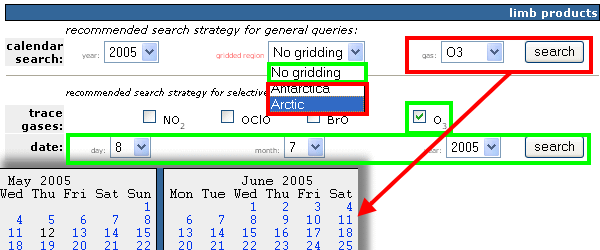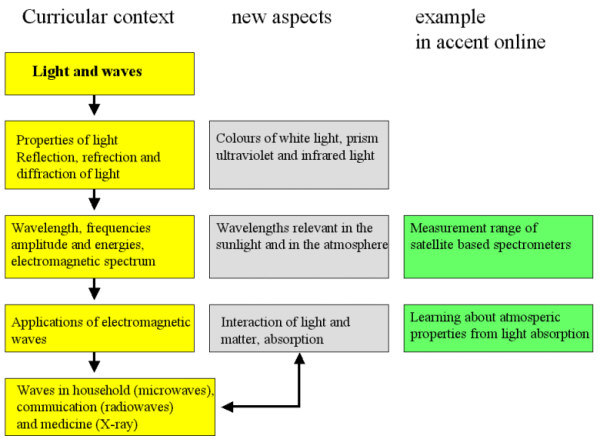 > ACCENT en > Nr 4 Oct. 2005 light/satellites > I: Information for teachers
> ACCENT en > Nr 4 Oct. 2005 light/satellites > I: Information for teachers
|
Information for teachers |
|
Solutions and further information: Find further material and solutions in the ACCENT material corner for this edition.. What are students expected to learn? The content of this journal is primarily focussing on physics classes, in particular optics: the properties of light and the interaction of light and matter.
Suggestions for extensions If more time is set aside for this topic, students can for example be invited to carry out inquiries in the SCIAMACHY data base. Please choose the website:
In the areas with green frames vertical ozone cross sections between the poles can be chosen for the respective day. The selection in red offers a view over the poles. Please click "Antarctica" or "Arctic" and press the button 'Search'. A calender is offered for selection of dates. Horizontal cross sections are shown for different altitudes.
|
 |
|
Example: Please choose "Antarctica" for August, 15th 2004. Adjust your screen to 1280 x 1024 px resolution full screen. Pushing the 'forward' button the pupils can click through the ozone profiles until end of September. Observe the development at 20 km altitude. It can be observed how the ozone hole is turning around in the polar vortex, a circumpolar wind. |
|
Curricular context
The contents of this magazine are suitable for science classes (for example KS 4) with a focus on optics, light and waves. Satellite based spectrometers can serve as an example of an application of light measuring instruments in the range from ultraviolet via visible to infrared radiation. The interaction of light and matter is briefly explained but without going too deeply into the physical theory of absorption.
|
 |
|
|
